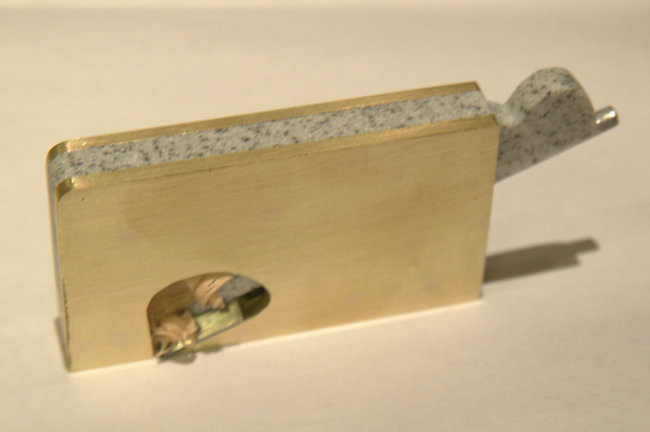I have started the making of a skew cutting brick intended to be a shooting plane. Build-alongs of this type of thing aren't that interesting (if they were, I'd put them on youtube) and it's not like a million people haven't already made infills with mostly hand tools, so I'll keep the updates short and seldom.
Perhaps a skewed plane isn't as common, but lots of things you can do well enough with limited tools , despite not being able to achieve perfection.
(I also took delivery of a LV skew shooter last week, we'll see if I can match it. )
The pins and tails are a little funny in spacing because they're laid out by eye, and the skew mouth means they can't match, anyway - the mouth area needs to be a pin on the sole or you'll be in big trouble. Even when the mouth is surrounded by a pin, it gets distorted in the peining stage and needs to be cleaned up.
Perhaps a skewed plane isn't as common, but lots of things you can do well enough with limited tools , despite not being able to achieve perfection.
(I also took delivery of a LV skew shooter last week, we'll see if I can match it. )
The pins and tails are a little funny in spacing because they're laid out by eye, and the skew mouth means they can't match, anyway - the mouth area needs to be a pin on the sole or you'll be in big trouble. Even when the mouth is surrounded by a pin, it gets distorted in the peining stage and needs to be cleaned up.





































